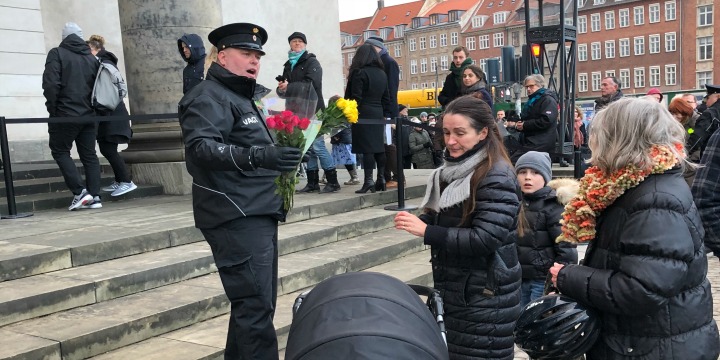On February 13, 2018, Prince Henrik — husband of Danish monarch Queen Margrethe — died at the age of 83. Many Jews recall the courage of the Danish royal family, and the entire Danish people, during the Holocaust — specifically how they saved approximately 99 percent of all Danish Jews from the Nazis.
Danish Jews were relatively safe until October 1, 1943, when — after increasing effectiveness in protecting Jews by the Danish resistance — Berlin ordered them arrested and deported. After the order, Danish civil servants started identifying and contacting Jews; but unlike the contacts made by their counterparts elsewhere, these contacts were made to warn Jews and get them into hiding.
Unlike most of Europe, Denmark tried to save the Jews from Nazi clutches, rather than deliver them.
Then, over several nights in October, ordinary Danes — led by the Danish resistance movement — evacuated all of Denmark’s remaining Jews (more than 7,200) across the Baltic Sea to neutral Sweden. This was an event unfortunately unique in the annals of the Holocaust. After that rescue, the Danish government continued to intercede on behalf of the almost 500 Danish Jews in the Theresienstadt concentration camp, saving almost all of them, too.
The prince’s death has shaken all Danes, who are proud of a scandal-free royal family that is beloved and honored by its people. His body was lain in state, and I was able to say “thank you” as a Jew. We should all be grateful for a people that could not even conceive of how being Jewish made some of their fellow citizens any different — and then acted on that belief.
Copenhagen is one of the world’s most beautiful cities to walk through; and after about 20 minutes, I arrived at Thorvaldsen’s Museum, where the body was lying. There I saw many Danes who were unable to make the hours-long wait — many with strollers and young children — leave flowers for the prince. The one discordant note was the presence of military guards with automatic weapons. As my hotelier told me, it is an unfortunate feature of life today, as “we face the same threat as you do.”
Since World War II, several myths have grown out of the Danish actions –the most prominent being that Denmark’s king wore the yellow star in solidarity with Jews. (In reality, Danish Jews never were required to wear the yellow star or other markings.)
Still, no myth could come close to what it took to carry out the rescue. Denmark’s heroic action took a social ethic so strong and so pervasive among an entire nation, that were it only common elsewhere in Europe, the Holocaust would not have been what it became.
Dr. Richard Benkin is an American human rights activist in Europe to meet with exiles and others struggling to free their own peoples from the heirs of the Nazis in Asia.


























